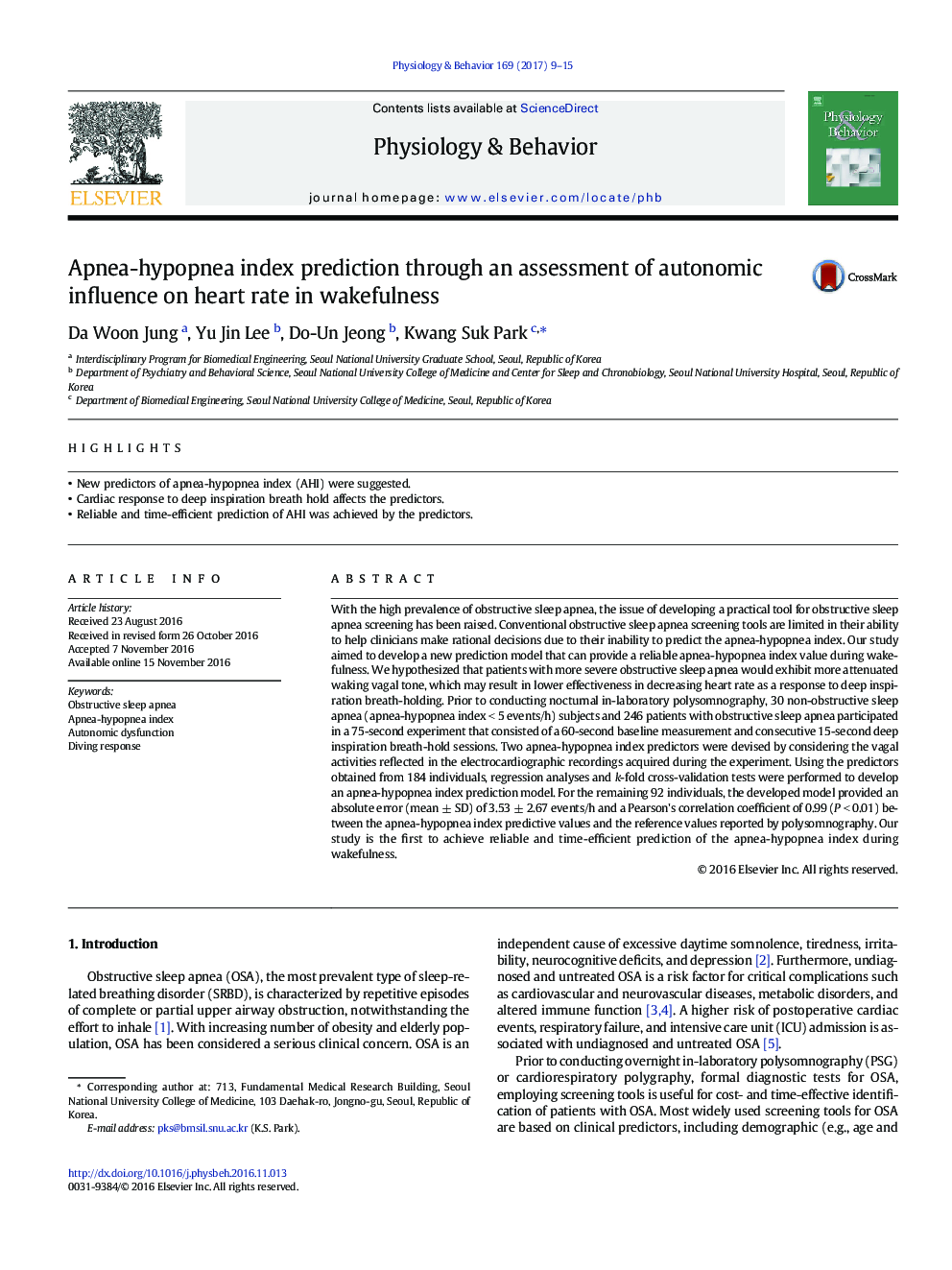| کد مقاله | کد نشریه | سال انتشار | مقاله انگلیسی | نسخه تمام متن |
|---|---|---|---|---|
| 5593987 | 1571150 | 2017 | 7 صفحه PDF | دانلود رایگان |
- New predictors of apnea-hypopnea index (AHI) were suggested.
- Cardiac response to deep inspiration breath hold affects the predictors.
- Reliable and time-efficient prediction of AHI was achieved by the predictors.
With the high prevalence of obstructive sleep apnea, the issue of developing a practical tool for obstructive sleep apnea screening has been raised. Conventional obstructive sleep apnea screening tools are limited in their ability to help clinicians make rational decisions due to their inability to predict the apnea-hypopnea index. Our study aimed to develop a new prediction model that can provide a reliable apnea-hypopnea index value during wakefulness. We hypothesized that patients with more severe obstructive sleep apnea would exhibit more attenuated waking vagal tone, which may result in lower effectiveness in decreasing heart rate as a response to deep inspiration breath-holding. Prior to conducting nocturnal in-laboratory polysomnography, 30 non-obstructive sleep apnea (apnea-hypopnea index < 5 events/h) subjects and 246 patients with obstructive sleep apnea participated in a 75-second experiment that consisted of a 60-second baseline measurement and consecutive 15-second deep inspiration breath-hold sessions. Two apnea-hypopnea index predictors were devised by considering the vagal activities reflected in the electrocardiographic recordings acquired during the experiment. Using the predictors obtained from 184 individuals, regression analyses and k-fold cross-validation tests were performed to develop an apnea-hypopnea index prediction model. For the remaining 92 individuals, the developed model provided an absolute error (mean ± SD) of 3.53 ± 2.67 events/h and a Pearson's correlation coefficient of 0.99 (P < 0.01) between the apnea-hypopnea index predictive values and the reference values reported by polysomnography. Our study is the first to achieve reliable and time-efficient prediction of the apnea-hypopnea index during wakefulness.
Journal: Physiology & Behavior - Volume 169, 1 February 2017, Pages 9-15
